Foodborne and neglected parasitic zoonoses in Ethiopian red meat animals: insights from a systematic review and meta-analysis
- PMID: 40534785
- PMCID: PMC12173893
- DOI: 10.3389/fvets.2025.1501940
Foodborne and neglected parasitic zoonoses in Ethiopian red meat animals: insights from a systematic review and meta-analysis
Abstract
Background: The most prevalent yet neglected cestode meat-borne parasitic zoonoses are bovine cysticercosis and cystic echinococcosis, while the most common meat-borne protozoan zoonoses are toxoplasmosis and cryptosporidiosis in Ethiopia. In Ethiopia, bovine cysticercosis, cystic echinococcosis, toxoplasmosis, and cryptosporidiosis are the most common but neglected meat-borne parasites. The main transmission route is through contaminated meat products. The aim of this review was to provide an overall prevalence estimation of major food-borne zoonotic parasitic in ruminants in Ethiopia.
Methods: The present meta-analysis was conducted based on the Preferred Reporting Items for Systematic Reviews and Meta-Analyses (PRISMA) guidelines. Articles were searched in PubMed, Google Scholar, Web of Science, and HINARI. A total of 104 eligible articles were included in the final meta-analysis. The pooled prevalence estimates and 95% confidence intervals (CI) were conducted using random effect model, and heterogeneity was assessed using I2 statistics.
Results: Toxoplasmosis had the highest pooled prevalence (38, 95% CI: 30-46%), followed by cystic echinococcosis (25, 95% CI: 18-32%), cryptosporidiosis (14, 95% CI: 9-19%), and bovine cysticercosis (9, 95% CI: 5-13%). In most individual analyses, Egger's regression test did not reveal significant publication bias, since the p-values were greater than 0.05. Regional subanalysis showed that bovine cysticercosis was most prevalent in the Amhara region (16, 95% CI: 6-13%), whereas cystic echinococcosis was highest in Oromia (33, 95% CI: 22-45%) and Tigray (29, 95% CI: 24-33%). Host-wise analysis indicated that toxoplasmosis was most prevalent in sheep (41%), followed by goats (39%), and cattle (28%). Cryptosporidiosis was most commonly detected in cattle (16%), sheep (11%), and goat (8%). Age-based analysis revealed a higher prevalence in calves and lambs with an estimated pooled prevalence of 15% (I 2 = 83%).
Conclusion: The increasing prevalence of meat-borne parasitic zoonoses in Ethiopia highlights the need for urgent intervention. Strengthening disease surveillance, enforcing strict meat inspection protocols, and raising public awareness about zoonotic risks are critical for effective control. A coordinated approach between veterinary professionals, public health authorities, and policymakers is essential to mitigate the burden of these neglected parasitic infections and protect both animal and human health.
Keywords: Ethiopia; foodborne; parasite; pooled prevalence; zoonosis.
Copyright © 2025 Fenta, Eshetu, Bitew, Dejene and Kinde.
Conflict of interest statement
The authors declare that the research was conducted in the absence of any commercial or financial relationships that could be construed as a potential conflict of interest.
Figures











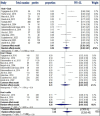
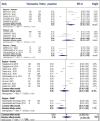
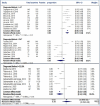
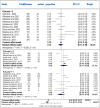
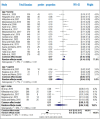




Similar articles
-
Prevalence and Associated Risk Factors of Intestinal Parasites and Enteric Bacterial Infections among Selected Region Food Handlers of Ethiopia during 2014-2022: A Systematic Review and Meta-Analysis.ScientificWorldJournal. 2022 Oct 12;2022:7786036. doi: 10.1155/2022/7786036. eCollection 2022. ScientificWorldJournal. 2022. PMID: 36277127 Free PMC article.
-
The national burden of mortality and its associated factors among burn patients in Ethiopia. A systematic review and meta-analysis.Burns. 2024 Dec;50(9):107201. doi: 10.1016/j.burns.2024.07.005. Epub 2024 Jul 8. Burns. 2024. PMID: 39317547
-
Mange mite infestation in small ruminants in Ethiopia: Systematic review and meta-analysis.Vet Parasitol. 2016 Mar 15;218:73-81. doi: 10.1016/j.vetpar.2016.01.017. Epub 2016 Jan 19. Vet Parasitol. 2016. PMID: 26872931
-
Surveillance for Violent Deaths - National Violent Death Reporting System, 50 States, the District of Columbia, and Puerto Rico, 2022.MMWR Surveill Summ. 2025 Jun 12;74(5):1-42. doi: 10.15585/mmwr.ss7405a1. MMWR Surveill Summ. 2025. PMID: 40493548 Free PMC article.
-
Systematic review and meta-analysis of metacestodes prevalence in small ruminants in Ethiopia.Prev Vet Med. 2016 Jul 1;129:99-107. doi: 10.1016/j.prevetmed.2016.05.006. Epub 2016 May 13. Prev Vet Med. 2016. PMID: 27317327
References
-
- Sheferaw D, Abebe R, Fekadu A, Olbamo G, Anjulo A, Yigebahal Z. Major causes of organ and carcass condemnation and associated financial losses in cattle slaughtered at Kombolcha ELFORA abattoir from 2008-2012, Ethiopia. Ethiop Vet J. (2019) 21:54–66. doi: 10.4314/evj.v21i1.5 - DOI
-
- CSA (2021). Federal Democratic Republic of Ethiopia central statistical agency agricultural sample survey 2020/21 (2013 E.C.) volume II report on livestock and livestock characteristics (private peasant holdings). Statistical bulletin 589, Addis Ababa.
-
- Girma S. Assessment of awareness on food borne zoonoses and its relation with veterinary public health services in and around Addis Ababa, Ethiopia. J Public Health Epidemiol. (2012) 4:48–51. doi: 10.5897/JPHE12.004 - DOI
Publication types
LinkOut - more resources
Full Text Sources

